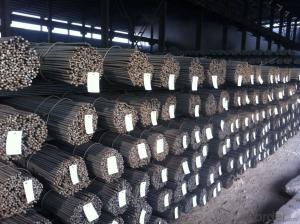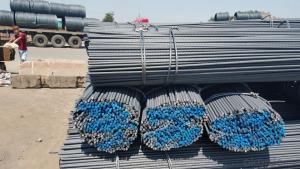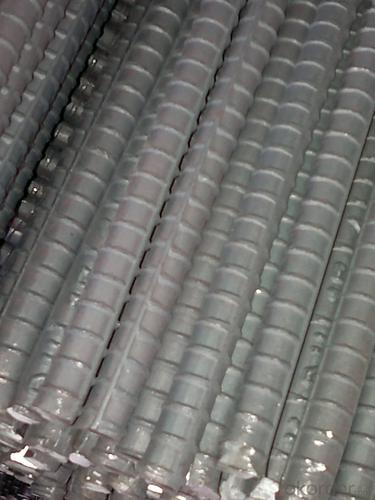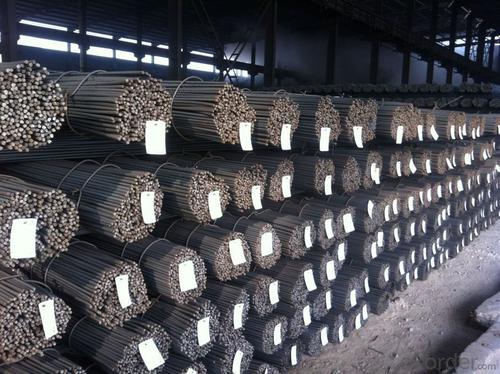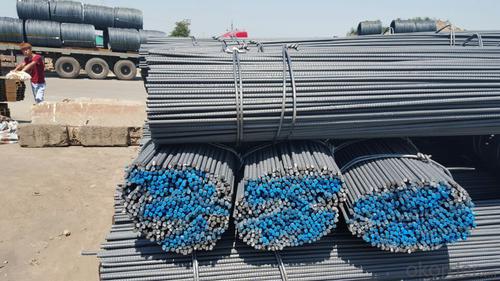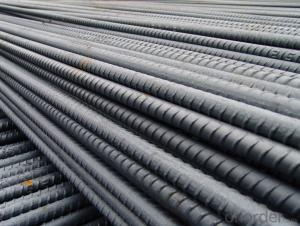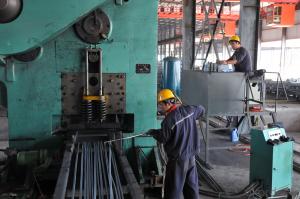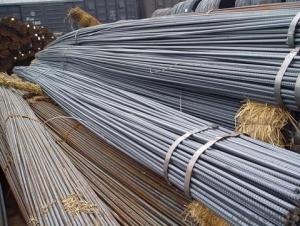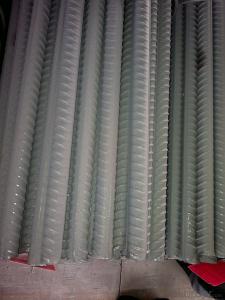Steel Reinforcing Rebars for Construction Concrete
- Loading Port:
- China main port
- Payment Terms:
- TT OR LC
- Min Order Qty:
- 100 m.t.
- Supply Capability:
- 10000 m.t./month
OKorder Service Pledge
OKorder Financial Service
You Might Also Like
Product Description:
OKorder is offering Steel Reinforcing Rebars for Construction Concrete at great prices with worldwide shipping. Our supplier is a world-class manufacturer of steel, with our products utilized the world over. OKorder annually supplies products to African, South American and Asian markets. We provide quotations within 24 hours of receiving an inquiry and guarantee competitive prices.
Product Applications:
Steel Reinforcing Rebars for Construction Concrete are ideal for structural applications and are widely used in the construction of buildings and bridges, and the manufacturing, petrochemical, and transportation industries.
Product Advantages:
OKorder's Steel Reinforcing Rebars for Construction Concrete are durable, strong, and wide variety of sizes.
Main Product Features:
· Premium quality
· Prompt delivery & seaworthy packing (30 days after receiving deposit)
· Can be recycled and reused
· Mill test certification
· Professional Service
· Competitive pricing
Product Specifications:
Manufacture: Hot rolled
Grade: HRB335,HRB400,HRB500
Certificates: ISO, SGS, BV, CIQ
Length: 6m – 12m, as per customer request
Packaging: Export packing, nude packing, bundled
Deformed Steel Bar | ||
Diameter (MM) | Cross Sectional Area (MM2) | Theorectical Weight (KG/M) |
6 | 28.27 | 0.222 |
8 | 50.27 | 0.395 |
10 | 78.54 | 0.617 |
12 | 113.1 | 0.888 |
14 | 153.9 | 1.21 |
16 | 201.1 | 1.58 |
18 | 254.5 | 2 |
20 | 314.2 | 2.47 |
22 | 380.1 | 2.98 |
25 | 490.9 | 3.85 |
28 | 615.8 | 4.83 |
32 | 804.2 | 6.31 |
36 | 1018 | 7.99 |
40 | 1257 | 9.87 |
Grade | Technical data of the original chemical composition (%) | |||||||
C | Mn | Si | S | P | B | |||
HRB335 | ≤0.25 | ≤1.60 | ≤0.80 | ≤0.045 | ≤0.045 | >0.0008 | ||
Physics capability | ||||||||
Yield Strength(N/cm2) | Tensile Strength(N/cm2) | Elongation (%) | ||||||
≥335 | ≥490 | ≥16 | ||||||
FAQ:
Q1: what is the difference between actual weight and theoretical weight?
A1: All the section steel has two weights: actual weight and theoretical weight. Actual weight is the weighing out when the product delivered from the mill. Theoretical weight is calculated by pieces. The invoice can be based on each of them as your request.
Q2: How many tons of steel products could be loaded in containers?
A2: Usually the steel products are delivered by bulk vessel because of the large quantity and the freight. However, there are no bulk vessel enter some seaports so that we have to deliver the cargo by containers. The 6m steel product can be loaded in 20FT container, but the quantity is changed according to the size, usually from 18tons to 25tons.
Q3: How soon can we receive the product after purchase?
A3: Within three days of placing an order, we will arrange production. The normal sizes with the normal grade can be produced within one month. The specific shipping date is dependent upon international and government factors, the delivery to international main port about 45-60days.
Images:
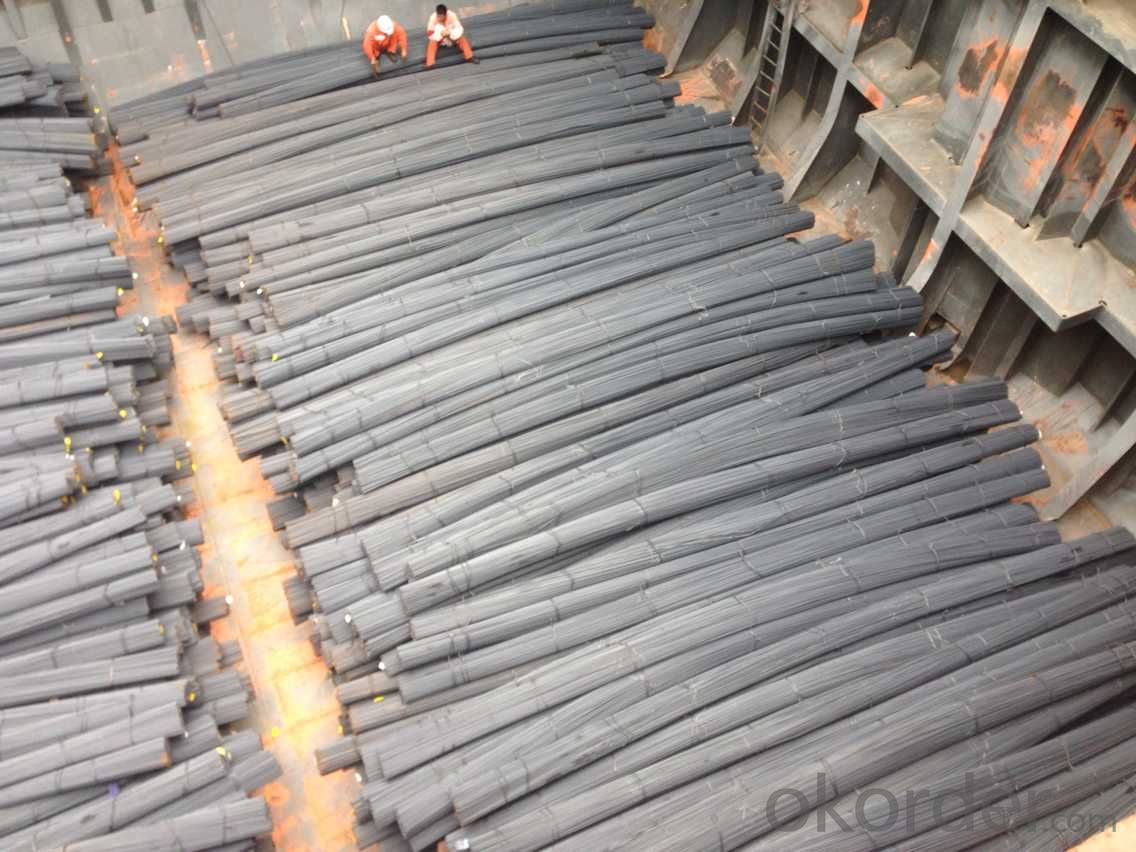
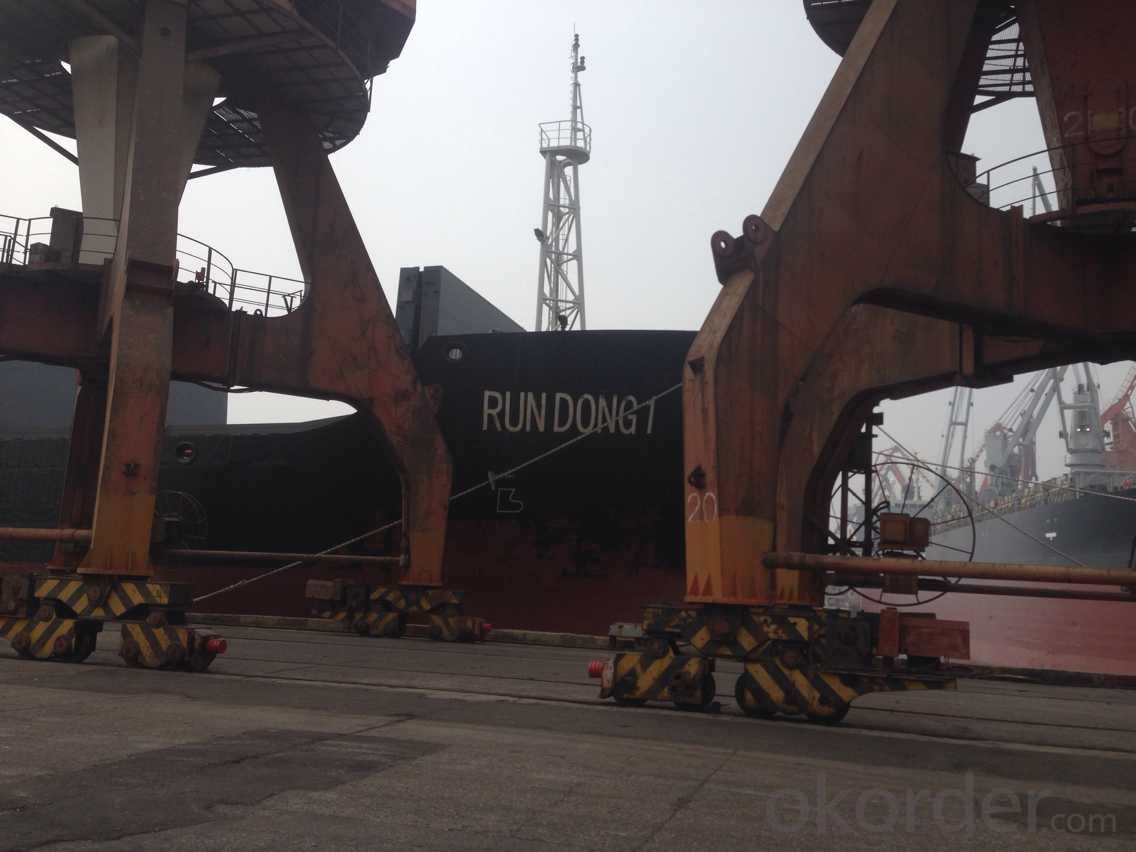
- Q: What is the role of steel rebars in preventing shrinkage cracks in concrete?
- Steel rebars play a crucial role in preventing shrinkage cracks in concrete. Shrinkage cracks occur in concrete due to the natural drying and curing process, as the water content in the concrete evaporates and the material contracts. These cracks can compromise the structural integrity and durability of the concrete. The inclusion of steel rebars in concrete helps to mitigate shrinkage cracks by providing tensile strength. While concrete is strong in compression, it is weak in tension. During the drying process, the rebars act as reinforcement, resisting the tensile forces that develop as the concrete shrinks. This prevents the formation and propagation of shrinkage cracks. The rebars act as a framework or skeleton within the concrete, distributing the tensile stresses and preventing them from concentrating in one area. By restraining the shrinkage of the concrete, the rebars help to maintain the overall integrity and stability of the structure. In addition, steel rebars also enhance the overall strength and load-bearing capacity of the concrete. By adding reinforcement, the concrete becomes more resistant to bending, shearing, and other forces that can lead to cracking. Furthermore, the presence of rebars in concrete also helps to control the width and depth of any cracks that may still occur. By confining and limiting the size of cracks, the rebars prevent them from expanding and potentially compromising the structural integrity of the concrete. In summary, steel rebars play a crucial role in preventing shrinkage cracks in concrete by providing tensile strength, distributing the stresses, enhancing overall strength, and controlling the size of cracks. Their inclusion in concrete ensures a more durable and reliable structure, minimizing the risk of damage and maintaining the longevity of the concrete.
- Q: What are the guidelines for the proper spacing of steel rebars in slabs-on-grade?
- To ensure the structural integrity and longevity of the concrete slab, it is crucial to follow guidelines for spacing steel rebars in slabs-on-grade. Here are the general guidelines to be followed: 1. Concrete cover: The first consideration is the distance between the rebar surface and the concrete edge, known as the concrete cover. Local building codes or engineering standards typically specify the minimum cover requirements, which must be strictly adhered to. This cover protects the rebar from corrosion and provides fire resistance. 2. Rebar spacing: The spacing between rebars depends on the load requirements and slab dimensions. A closer spacing results in a stronger slab. However, it is necessary to maintain proper spacing to allow free flow of concrete around the rebar during pouring and ensure proper consolidation. Generally, the spacing should not exceed three times the slab thickness or 18 inches, whichever is smaller. 3. Rebar size and diameter: The selection of rebar size and diameter depends on the load requirements and design specifications. Larger loads require larger diameter rebars with increased spacing. Common rebar sizes for slabs-on-grade range from #3 (3/8 inch diameter) to #8 (1 inch diameter). 4. Rebar placement: Proper placement of rebars within the slab is critical. The rebars should be positioned at the center of the slab's thickness to ensure even load distribution. Moreover, they should be securely tied or supported to prevent displacement during concrete placement and consolidation. 5. Joint reinforcement: Construction joints are often included in slabs-on-grade to accommodate expansion and contraction. Proper reinforcement of these joints is essential for maintaining structural integrity. Joint reinforcement, such as dowel bars or tie bars, should be placed perpendicular to the joint and adequately anchored on both sides. It is important to note that these guidelines provide a general overview, and specific project requirements may vary. Consulting a structural engineer or following local building codes and industry standards is essential to ensure compliance and optimize the design of steel rebars in slabs-on-grade.
- Q: What are the guidelines for the proper spacing of steel rebars in slabs-on-grade?
- The guidelines for the proper spacing of steel rebars in slabs-on-grade typically vary based on the specific project requirements and the structural engineering design. However, some general guidelines suggest that rebars should be spaced apart at a distance equal to or less than three times the slab thickness. Additionally, the spacing between rebars should be consistent, and there should be enough clearance between the rebars and the edges or formwork to ensure proper concrete coverage and adequate reinforcement. It is crucial to consult the project's structural engineer and adhere to local building codes for specific guidelines.
- Q: How do steel rebars reinforce concrete?
- Steel rebars reinforce concrete by providing additional strength and stability to the structure. When concrete is poured, it is strong in compression but weak in tension. Steel rebars are embedded within the concrete to counterbalance this weakness and enhance its tensile strength. The rebars act as a reinforcement by absorbing the tensile forces that occur when a structure is subjected to bending or stretching. When such forces are applied, the rebars distribute the load across the concrete, preventing cracks and failure. This is crucial in structures such as buildings, bridges, and dams, where the concrete needs to withstand various external forces. The rebars also help to control the expansion and contraction of the concrete due to temperature changes. Since steel has a similar coefficient of thermal expansion as concrete, it helps to minimize the stress that occurs due to temperature fluctuations, reducing the risk of cracking. Moreover, the bond between the steel rebars and the concrete is essential for effective reinforcement. The rough surface of the rebars provides an excellent grip with the surrounding concrete, ensuring that they work together as a composite material. This bond enables the transfer of stress from the concrete to the rebars, enhancing the overall strength and durability of the structure. In summary, steel rebars reinforce concrete by adding tensile strength, distributing loads, controlling temperature-induced stress, and creating a strong bond with the concrete. This combination of concrete and steel creates a reinforced concrete structure that can withstand various external forces and maintain its structural integrity over time.
- Q: What is the process of anchoring steel rebars in concrete?
- To establish a sturdy and secure connection between steel rebars and concrete, a series of steps must be taken. Initially, the concrete surface where the rebars will be anchored must be adequately prepared. This typically entails cleansing the surface to eliminate any dirt, dust, or debris that could hinder the bonding process. It is also imperative to confirm that the concrete has fully cured and attained the required strength before proceeding. Subsequently, the rebars are cut to the desired length and shape as per the construction plans. Adhering to the specified dimensions and placement requirements is essential to guarantee proper reinforcement and structural integrity. Once the rebars are prepared, they are typically positioned in the desired location within the concrete formwork. The rebars need to be placed at the correct depth and spacing as outlined in the design. This is commonly achieved by employing plastic or metal chairs, spacers, or tie wire to hold the rebars firmly in place. Once the rebars are appropriately positioned, the next step involves fastening them to the concrete. One prevalent method of anchoring the rebars is by utilizing mechanical anchors or rebar couplers. These devices are designed to establish a strong connection between the rebars and the concrete through various mechanisms such as threading, crimping, or expansion. Alternatively, another technique for anchoring the rebars involves using adhesive or cementitious grouts. These substances are applied to the rebars and then inserted into pre-drilled holes in the concrete. The adhesive or grout aids in bonding the rebars to the concrete and provides additional reinforcement. Finally, after the rebars are anchored, the concrete is poured or placed around them. To ensure complete encapsulation of the rebars, the concrete must be consolidated effectively. This can be achieved by implementing techniques such as vibrating the concrete or employing specialized equipment. In conclusion, anchoring steel rebars in concrete necessitates meticulous planning, preparation, and execution to establish a dependable and long-lasting bond. Adhering to industry standards and design specifications is vital to achieve the desired structural strength and integrity.
- Q: How do steel rebars enhance the bond between concrete and reinforcement?
- Steel rebars enhance the bond between concrete and reinforcement through various mechanisms. Firstly, the presence of rebars in concrete increases the mechanical interlock between the two materials. As concrete is poured around the rebars, it fills the gaps between the steel bars, creating a strong bond when it hardens. This mechanical interlock helps to prevent the separation of concrete and reinforcement, especially under tensile loads. Secondly, steel rebars enhance the bond by providing additional surface area for adhesion. The rough texture of the rebars allows the concrete to grip onto the steel surface, creating a stronger bond. This adhesion is further improved by the corrosion products that form on the surface of the steel rebars over time. These products create a rougher surface, increasing the bond strength between the concrete and reinforcement. Thirdly, rebars act as load transfer devices in concrete structures. When external forces are applied to the structure, the rebars distribute and transfer these forces to the surrounding concrete. This load transfer mechanism helps to improve the overall structural integrity and performance of the concrete element. Additionally, steel rebars also enhance the bond between concrete and reinforcement through their ability to resist deformation. Under tensile loads, the rebars elongate and absorb the stress, preventing the concrete from cracking. This prevents the development of cracks that could weaken the bond between the two materials. In summary, steel rebars enhance the bond between concrete and reinforcement by providing mechanical interlock, increased surface area for adhesion, load transfer capabilities, and resistance to deformation. These factors collectively contribute to the overall strength, durability, and performance of reinforced concrete structures.
- Q: What is the cost-effectiveness of using steel rebars?
- The cost-effectiveness of using steel rebars is generally considered to be high. Steel rebars provide strength and durability to reinforced concrete structures, making them a popular choice in construction. One of the key advantages of steel rebars is their long lifespan, which reduces the need for frequent repairs or replacements. This can result in significant cost savings over time, as the initial investment in steel rebars can be recouped through their extended service life. Additionally, steel rebars are readily available and have a comparatively low cost compared to alternative reinforcement materials, such as carbon fiber or fiberglass. This makes steel rebars a cost-effective choice for a wide range of construction projects. Moreover, steel rebars offer excellent tensile strength, allowing them to withstand heavy loads and seismic forces. By reinforcing concrete structures with steel rebars, the risk of structural failure or collapse is significantly reduced. This can lead to additional cost savings by minimizing the need for costly repairs or reconstruction in the event of a disaster. Furthermore, steel rebars are versatile and can be easily fabricated and customized to suit specific project requirements. This versatility allows for efficient installation and reduces labor costs, further enhancing the cost-effectiveness of using steel rebars. In conclusion, the cost-effectiveness of using steel rebars is high due to their long lifespan, comparatively low cost, excellent tensile strength, and versatility. By choosing steel rebars as a reinforcement material, construction projects can benefit from reduced maintenance and repair costs, improved structural integrity, and overall long-term savings.
- Q: How do steel rebars affect the shrinkage and creep of concrete?
- Concrete's shrinkage and creep behavior can be significantly influenced by steel rebars. Shrinkage refers to the concrete's volume reduction caused by moisture loss during drying, while creep refers to its time-dependent deformation under sustained load. The inclusion of steel rebars helps mitigate concrete shrinkage. As the concrete shrinks, the rigid rebars resist this reduction and provide restraint. This restraint minimizes volume changes and reduces cracking caused by shrinkage. Moreover, the tensile strength of rebars allows them to distribute stress and prevent localized cracking, further minimizing the impact of shrinkage on overall concrete performance. Regarding creep, steel rebars can increase concrete's deformation. This is because the rebars introduce additional stress and strain, leading to greater creep deflections. However, compared to factors like mix design, water-cement ratio, and curing conditions, the effect of steel rebars on creep is generally considered minor. It's important to note that proper reinforcement layout design and detailing can minimize the impact of steel rebars on shrinkage and creep. Adequate spacing, rebars cover, and reinforcement ratios optimize both concrete and rebars' performance. Additionally, the use of supplementary cementitious materials like fly ash or silica fume can reduce shrinkage and mitigate creep's impact. In summary, steel rebars are crucial in minimizing concrete's shrinkage-related issues through restraint and stress distribution. Though they may increase creep deformation, their impact is generally minor compared to other factors. Proper reinforcement design and detailing optimize concrete and steel rebars' performance in terms of shrinkage and creep.
- Q: What are the guidelines for proper tying of steel rebars in concrete structures?
- To ensure the structural integrity and durability of concrete structures, it is crucial to adhere to guidelines for the proper tying of steel rebars. Here are some important guidelines to consider: 1. Rebar Placement: Before tying, accurately position the rebars according to the structural drawings and design specifications. Place them at the designated locations and depths, ensuring proper spacing to provide the necessary strength and reinforcement. 2. Tying Tools: Utilize suitable tools like pliers or rebar tying machines for secure and proper tying. Ensure that the tools are in good condition and appropriate for the size and type of rebars being used. 3. Tying Technique: Employ a consistent and efficient tying technique. Begin by securely holding the rebars together at the intersection point. Wrap the tie wire around both rebars multiple times, ensuring tight and firm connections. Properly twist and neatly cut the tie wire to avoid any protrusions. 4. Tie Wire Selection: Use high-quality tie wires with sufficient strength to withstand tension and load requirements. Opt for corrosion-resistant materials such as galvanized steel or stainless steel to prevent rusting and deterioration over time. 5. Tying Spacing: Adhere to the specified tying spacing as per the design requirements. Adequate spacing between ties helps maintain rebars in their designated positions, preventing displacement during concrete pouring and subsequent curing. 6. Tying Quantity: Tie rebars at suitable intervals to ensure ample connection and reinforcement. The number of ties needed depends on the size, shape, length of rebars, and structural design specifications. 7. Tying Consistency: Maintain consistency in tying throughout the entire concrete structure. Uneven or inconsistent tying can result in weak points, reduced reinforcement, and compromised structural integrity. 8. Tying Safety: Prioritize safety during the tying process. Wear appropriate personal protective equipment (PPE) like gloves and safety glasses to prevent injuries. Take precautions to avoid tripping hazards and ensure a safe working environment. 9. Inspection and Quality Control: Regularly inspect the tied rebars to ensure compliance with design specifications and quality standards. Conduct visual inspections and perform pull tests to assess the strength and effectiveness of the ties. 10. Compliance with Codes and Standards: Adhere to local building codes, industry standards, and engineering guidelines specific to your region. These codes provide essential requirements for rebar tying, ensuring the durability and safety of the concrete structure. By following these guidelines, construction professionals can enhance the strength, stability, and longevity of concrete structures through proper tying of steel rebars.
- Q: What are the standard sizes of steel rebars?
- The standard sizes of steel rebars typically range from 6mm to 50mm in diameter.
Send your message to us
Steel Reinforcing Rebars for Construction Concrete
- Loading Port:
- China main port
- Payment Terms:
- TT OR LC
- Min Order Qty:
- 100 m.t.
- Supply Capability:
- 10000 m.t./month
OKorder Service Pledge
OKorder Financial Service
Similar products
Hot products
Hot Searches
Related keywords

